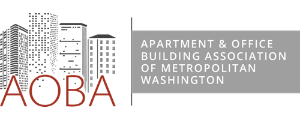Emergency Preparedness Perspective: Tips on Fire Alarms and Sprinkler Safety
Fire Alarm and Sprinkler System Operation, Inspection, Testing and Maintenance
Note: Periodically, AOBA's Emergency Preparedness Committee members will submit articles/ tips for members. This article was contributed by David C. Taylor, FIRELINE CORPORATION
As AOBA members know, having a properly working fire alarm and sprinkler system is a critical component of any effective fire safety program. Here are some considerations every building owner should make towards maintaining, inspecting and testing commercial fire alarm and sprinkler systems.
Take Responsibility for Your Fire Systems
As a building owner, it’s crucial to take responsibility for the things that you can control. This includes fire alarm and sprinkler systems. It’s vitally important not to overlook fire alarm and sprinkler systems just because you have never experienced a problem (or worse, a fire.)
Be proactive in managing the inspection, testing, and maintenance of all fire systems (and fire extinguishers) in your building.
Understand How Your Fire Systems Work
Do you know the difference between a trouble condition and supervisory signal on your fire alarm system? A trouble condition or trouble light on a fire alarm system indicates a condition that might adversely affect the proper operation of the system. A supervisory signal refers to a condition in which a device supervised by a fire alarm system is moved from its "normal" state, such as would be the case when you close a "normally open" sprinkler valve, or the air pressure in a sprinkler dry system falls below a pre-set level. How do you silence or acknowledge these signals. What should you do in the event of a full blown alarm? How can you find out which device is causing the alarm? Not knowing the answer to these questions leaves you unaware of how your fire alarm system actually works and how to respond. It’s important to ask your fire protection contractor how your system actually works. It’s important to learn as much as you can about the fire alarm system so you can use them correctly and efficiently.
Know the Inspection, Testing, and Maintenance Requirements
National Fire Protection Association (NFPA) standards explicitly provide minimum inspection and testing requirements. However, it’s never a bad policy to go above and beyond the minimum requirements. Regular inspection and testing is critical to ensure that all fire systems are in proper working order.
Train All Employees and Staff
Training appropriate employees how to use fire alarm and sprinkler systems is critical. Proper consideration should be given as to who needs the training. Don’t forget those responsible for after-hours management or response. Training can be provided by your fire protection contractor. Industry experience tells us that properly trained staff can greatly mitigate a fire incident. And don’t forget, if you suspect there is a fire in your building, call 911 first!
